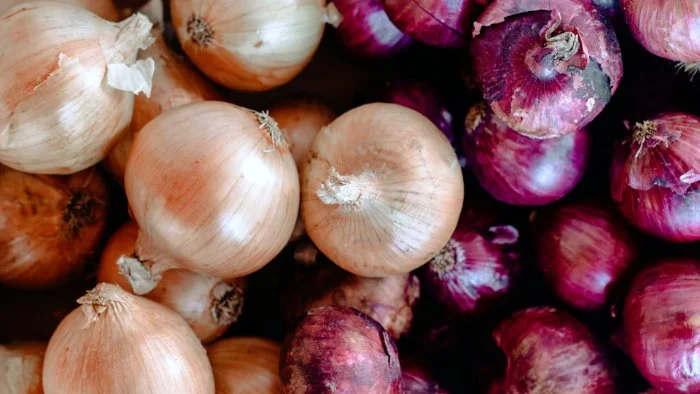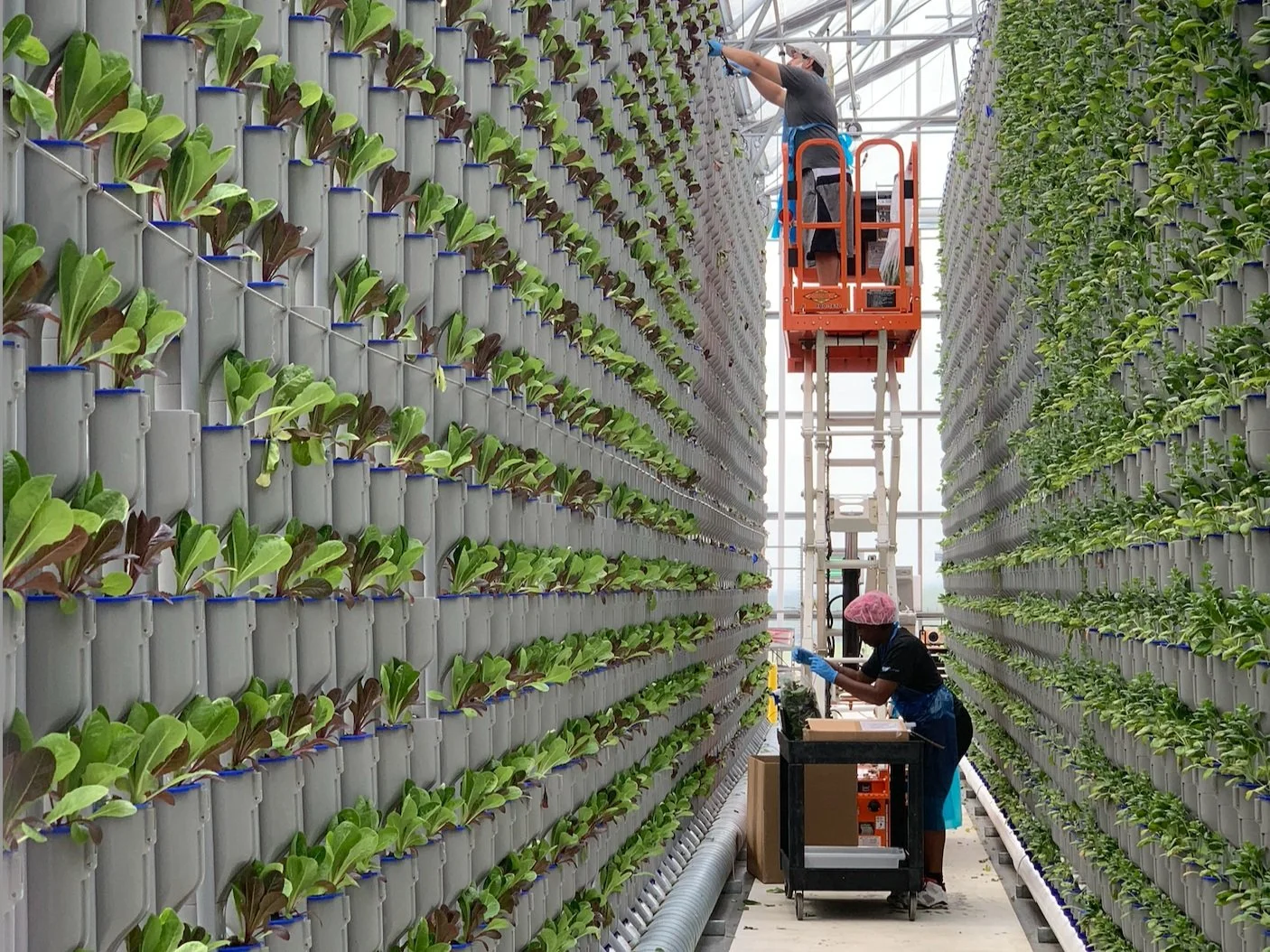12 Plants that Repel Insects Naturally
Some plants repel insects with their strong scents and natural oils. These plants help keep bugs away without harmful chemicals, making them an excellent choice for a healthier garden.
Bug deterrent plants offer a safe and natural way to protect your outdoor space. Unlike pesticides, they don’t harm helpful insects or pollute the environment. By adding specific plants to your garden, you can enjoy a pest-free space while supporting a more sustainable way to grow food.
Plants like basil, lavender, and marigolds naturally repel mosquitoes, flies, aphids, and other pests with their strong scents and oils—no harmful chemicals needed. These bug-deterrent plants cost $3-8 each versus $100-300+ annually for pesticides, work in gardens or containers on balconies, and many are perennials that return year after year. Bonus: they also attract beneficial pollinators like bees and butterflies.
Whether you have a sprawling garden or just a sunny windowsill, you can create natural pest control that's safer for your family, pets, and the environment.
Why Use Plants to Keep Bugs Away?
Many people rely on chemical pesticides to keep bugs away, but these sprays can do more harm than good. They don’t just kill pests—they also harm bees, butterflies, and other helpful insects. Over time, pesticides seep into the soil and water, polluting the environment and affecting wildlife. They can even make their way into food, raising concerns about health and safety.
A better option is to use bug-deterrent plants. These plants naturally keep insects away with their strong scents and oils. They offer an eco-friendly pest-control solution. Unlike pesticides, they don’t disrupt the balance of nature or pose risks to people and animals. The right plants can protect your garden while supporting a healthier environment. Many of these plants have other benefits, like attracting pollinators or adding fresh herbs and flowers to your home.
How Plants Naturally Repel Insects
Plants have built-in defenses that help them survive in the wild. Some plants deter insects by giving off intense scents that bugs find overwhelming. For example, lavender and basil produce natural aromas that mosquitoes and flies avoid.
Other plants create oils or compounds that insects dislike. Chrysanthemums contain pyrethrin, a natural insecticide found in many bug sprays. Garlic and onions release sulfur compounds that keep pests away from nearby plants.
Some plants act as trap crops, luring insects away from more valuable plants. Nasturtiums attract aphids, keeping them off vegetables like tomatoes and peppers. You can protect your garden naturally and chemical-freely by choosing the right plants that deter insects. These plants work together to create a balanced ecosystem, making them a smart choice for pest control.
| Plant | Description / Pests Repelled |
|---|---|
| Herbs That Deter Insects | |
| Basil | Repels mosquitoes and flies, making it a great plant to grow near outdoor seating areas. |
| Lavender | Keeps moths, fleas, and mosquitoes away with its soothing scent. It also appeals to pollinators. |
| Rosemary | Deters mosquitoes and cabbage moths. It thrives in warm weather and can be planted near vegetables. |
| Flowers That Keep Bugs Away | |
| Marigolds | Their scent repels aphids, mosquitoes, and nematodes, making them great companion plants. |
| Chrysanthemums | Contain pyrethrin, a natural insecticide. They help deter roaches, ants, and ticks. |
| Petunias | Deter aphids, tomato hornworms, and leafhoppers. They’re easy to grow and add beauty to any garden. |
| Vegetables That Naturally Deter Pests | |
| Garlic | Releases sulfur compounds that repel aphids, mosquitoes, and cabbage worms. |
| Onions | Planting them alongside carrots or lettuce can help reduce pest damage by keeping carrot flies away. |
| Chives | Protect against Japanese beetles and aphids. Their pungent smell also helps deter deer. |
| Companion Planting for Pest Control | |
| Nasturtiums | A trap crop for aphids, keeping them away from other plants like tomatoes and beans. |
| Mint | Its strong scent repels ants and mosquitoes. Plant it in containers to control its growth. |
| Sage | Helps keep cabbage moths and beetles away, making it a great companion for brassicas. |
Attracting Beneficial Insects While Deterring Pests
The key to a thriving garden is creating a balanced ecosystem that welcomes helpful insects while keeping pests at bay. Many plants that repel harmful bugs also attract pollinators and beneficial predators that eat pests naturally.
Plants That Do Both
Lavender – Repels mosquitoes, flies, and moths while attracting bees, butterflies, and hoverflies (whose larvae eat aphids)
Marigolds – Keep aphids and mosquitoes away but draw in ladybugs and lacewings, which feed on garden pests
Herbs (basil, mint, oregano) – Deter flies and mosquitoes when plants are brushed or crushed, but their flowers attract native bees and beneficial wasps
Chrysanthemums – Contain natural insecticide pyrethrin that repels many pests, yet provide late-season nectar for pollinators
Strategy for Success
Plant in layers: Position pest-repelling plants around the perimeter of your garden, with pollinator-attracting flowers mixed throughout
Let herbs flower: Allow basil, mint, and other herbs to bloom—the flowers feed beneficial insects while the foliage continues to deter pests
Create diversity: Plant at least 5-7 different species to support various beneficial insects throughout the growing season
Avoid conflict: Don't spray any pesticides (even organic ones) on plants you're using to attract pollinators
Beneficial Insects to Welcome
Ladybugs: Eat up to 5,000 aphids in their lifetime
Lacewings: Their larvae consume aphids, mites, and other soft-bodied pests
Hoverflies: Adults pollinate while larvae eat aphids
Parasitic wasps: Control caterpillars and aphid populations without stinging humans
By selecting plants strategically, you can build a garden that naturally manages pests while supporting the pollinators essential for food production.
The Best Plants That Repel Insects
Certain plants can help keep your garden pest-free without the need for harmful sprays. Selecting the right plants helps naturally deter insects while creating a thriving, balanced ecosystem.
Herbs, flowers, and vegetables all play a role in natural pest control. Companion planting—growing specific plants together—can also help protect your crops. It can lure pests away or make your garden less inviting to insects. Below are some of the best plants that repel bugs and keep your garden healthy.
Lavender is an excellent insect deterrent.
Herbs That Deter Insects
Many herbs not only add flavor to meals but also help repel insects. Their natural scents and oils create an invisible shield against common pests.
Basil – Repels mosquitoes and flies, making it a great plant to grow near outdoor seating areas.
Lavender – Keeps moths, fleas, and mosquitoes away with its soothing scent. It also appeals to pollinators like bees and butterflies.
Rosemary – Deters mosquitoes and cabbage moths. It thrives in warm weather and can be planted near vegetable gardens to keep pests away.
These plants that repel insects are easy to grow and provide multiple benefits, from pest control to fresh herbs for cooking.
Marigolds act as a natural mosquito repellent.
Flowers That Keep Bugs Away
Flowers can do more than just add color to your garden—they also help repel unwanted pests. Their strong scents and natural chemicals make them an excellent choice for natural pest control.
Marigolds – Their scent repels aphids, mosquitoes, and nematodes, making them great companion plants for vegetables like tomatoes and peppers.
Chrysanthemums – Contain pyrethrin, a natural insecticide found in many bug sprays. They help deter roaches, ants, and ticks.
Petunias – Deter aphids, tomato hornworms, and leafhoppers. They’re easy to grow and add beauty to any garden.
Adding flowers that keep bugs away can enhance your garden’s appearance while reducing pests naturally.
Onions help reduce pest damage to other plants.
Vegetables That Naturally Deter Pests
Some vegetables have natural pest-repelling properties. They can help protect your garden without the need for chemicals.
Garlic – Releases sulfur compounds that repel aphids, mosquitoes, and cabbage worms. It’s a great companion plant for peppers and tomatoes.
Onions - Planting them alongside carrots or lettuce can help reduce pest damage by keeping carrot flies and aphids away.
Chives – Protect against Japanese beetles and aphids. Their pungent smell also helps deter deer and rabbits.
By growing vegetables that deter insects, you can keep your crops healthier while reducing the need for pesticides.
Mint is a strong ant and mosquito repellent.
Companion Planting for Pest Control
Companion planting naturally protects your garden by pairing plants that benefit each other. Some plants act as trap crops, drawing pests away from important vegetables, while others create scents that repel bugs.
Nasturtiums – A trap crop for aphids, keeping them away from other plants like tomatoes and beans.
Mint – Its strong scent repels ants, mosquitoes, and other insects. However, it spreads quickly, so plant it in containers to control its growth.
Sage – Helps keep cabbage moths and beetles away, making it a great companion for brassicas like cabbage and broccoli.
Companion planting with bug-deterrent plants is a smart gardening technique. It's a natural way to reduce pests while promoting a healthier, more productive garden. Other sustainable ways to prevent pests exist, like the controlled environments in Eden Green’s greenhouses.
Cost-Effective Natural Pest Control
Natural pest control with plants offers significant cost savings compared to chemical pesticides. While a single bottle of commercial pesticide costs $15-40 and needs to be reapplied every few weeks, a single basil or marigold plant costs $3-8 and provides protection for an entire growing season.
Cost Comparison:
Chemical pesticides: $100-300+ per year for regular application on a medium-sized garden
Bug-deterrent plants: $30-75 initial investment for 10-15 plants that return year after year (perennials) or self-seed (annuals like marigolds)
Many of these plants are perennials, meaning they come back each year without additional cost. Herbs like rosemary, lavender, and sage can last 5-10 years with proper care. Even annual plants like marigolds and nasturtiums produce seeds that you can collect and replant the following season at no extra cost.
Where to Source Bug-Repelling Plants:
Local nurseries: Often have region-specific varieties that thrive in your climate ($4-10 per plant)
Home improvement stores: Budget-friendly options during spring and summer ($2-6 per plant)
Online retailers: Bulk seed packets for $2-5 that can produce dozens of plants
Farmers markets: Find established plants and connect with local growers for tips
Seed swaps: Community events where gardeners exchange seeds for free
Money-Saving Tips:
Start herbs like basil and mint from seed—one $2 packet can produce 20+ plants
Buy perennials (lavender, rosemary, sage) that return year after year
Propagate plants like mint and sage from cuttings to expand your garden for free
Choose plants that serve multiple purposes (herbs for cooking, flowers for cutting)
By investing in bug-deterrent plants, you save money over time while creating a healthier, more sustainable garden.
Bug-Repelling Plants for Small Spaces
Best Options for Balconies, Patios, and Small Gardens
Limited space doesn't mean you can't enjoy natural pest control. Many bug-deterrent plants thrive in containers and small gardens, making them ideal for apartment balconies, patios, or compact urban yards.
Top Container-Friendly Plants:
For Balconies (6+ hours of sun):
Basil – Grows well in 8-10 inch pots, repels mosquitoes and flies
Lavender – Compact varieties like 'Munstead' fit in 12-inch containers, deters moths and fleas
Petunias – Cascading varieties perfect for hanging baskets, keeps aphids away
Marigolds – Dwarf varieties grow 6-8 inches tall in small pots, repels multiple pests
For Shaded Patios (3-4 hours of sun):
Mint – Thrives in partial shade and containers (which control its spreading habit), repels ants and mosquitoes
Chives – Tolerates some shade, fits in 6-8 inch pots, deters aphids
Lemon balm – Shade-tolerant herb that repels mosquitoes, grows well in 10-inch containers
For Windowsills and Indoor Spaces:
Basil – Grows indoors with 6 hours of sunlight or grow lights
Rosemary – Indoor varieties stay compact and deter mosquitoes
Scented geraniums – Repel mosquitoes and thrive on sunny windowsills
Small Space Strategy:
Vertical growing: Use wall-mounted planters or trellises for herbs like mint and climbing nasturtiums
Multi-purpose plants: Choose herbs you'll also use for cooking (basil, rosemary, chives)
Grouping: Cluster 3-4 different pest-repelling plants together for stronger protection
Placement: Position plants near doorways, outdoor seating areas, or open windows where pests enter
Container Care Tips:
Use pots with drainage holes to prevent root rot
Choose containers at least 8-12 inches deep for herbs and flowers
Mix in slow-release organic fertilizer since container plants need more nutrients
Water more frequently than garden plants—containers dry out faster
Even in a small space, you can create an effective barrier against insects naturally and sustainably.
Sustainable Pest Control with Hydroponic Greenhouses
Traditional farms use pesticides to keep bugs away, but these chemicals can pose environmental risks and leave residue on food. Eden Green’s hydroponic greenhouses solve this problem by growing plants in a fully controlled space where pests can’t escape.
Our system keeps crops safe without the need for harmful sprays. Because we grow plants indoors, we don’t have to worry about insects damaging them. This means our hydroponic produce is fresh, clean, and pesticide-free.
Unlike traditional farming, hydroponic greenhouses use innovative technology to stop pest problems before they start. This creates a safer, more sustainable way to grow food. Want to learn more?
FAQs about Bug Repelling Plants
-
There isn’t a single best plant, but some of the most effective options include basil, lavender, and marigolds. These plants give off strong scents that insects dislike, making them excellent natural repellents for gardens and outdoor spaces.
-
Many bugs hate the smell of pungent herbs and flowers. Familiar scents that repel insects include citronella, peppermint, lavender, and garlic. These natural aromas help keep pests away without the need for chemical sprays.
-
Several plants help deter flies and mosquitoes. Basil, rosemary, and mint are great at repelling flies. Citronella, lavender, and marigolds work well against mosquitoes. Planting these around outdoor seating areas can help keep bugs away.
-
Chrysanthemums are one of the best natural insect repellents. They contain pyrethrin, a compound used in many bug sprays. Other good options include garlic, lemongrass, and petunias, all of which help keep pests at bay.
-
Yes, several plants can be grown indoors including basil, mint, lavender, and rosemary. They work best on sunny windowsills or with grow lights. While less effective than outdoor plants, they can help deter flies, mosquitoes, and ants when placed near entryways and windows.
-
Basil, marigolds (dwarf varieties), petunias, and mint are excellent for container growing on balconies. Choose compact varieties and use pots at least 8-12 inches deep. These plants thrive in containers and provide natural pest control even in limited space.
-
Most plants on this list are safe when used properly. Basil, marigolds, and petunias are generally non-toxic. However, some plants like mint and lavender can cause mild stomach upset if pets eat large amounts. Always supervise children and pets around plants and research specific varieties if you have concerns.
-
Bug-repelling plants cost $3-8 per plant initially but provide protection for an entire season or longer. Chemical pesticides cost $100-300+ annually for regular applications. Many pest-repelling plants are perennials that return year after year, making them more cost-effective long-term.









